Agriculture Reference
In-Depth Information
(a)
Fire-resistant
200-400
750
Mean annual precipitation (mm)
(b)
Fire-prone
Renosterveld
Fynbos
600
Mean annual precipitation (mm)
Fig. 7.4
The major vegetation types of the Cape in relation to fire, rainfall and soils.
(a) Fire-resistant ecosystems seldom burn and occur on both clay-rich (granite and
shale-derived soils) and clay-poor (quartzites, aeolian sands, limestone) soils. (b) Fire-prone
formations are alternative ecosystem states to fire-resistant vegetation and occupy the same
environmental space. Fynbos occurs over a wide rainfall gradient but is restricted to sandy
(nutrient-poor) soils in more arid sites. Renosterveld generally occurs on more clay-rich soils
and in more arid sites, often on the lower slopes of fynbos-clad mountains
.
Thus the Cape region has alternative fire-prone and fire-resistant ecosystem
states distributed across wide rainfall gradients and diverse soils. The fire-prone
types dominate in the higher-rainfall regions with succulent shrublands dominat-
ing the arid regions. The fire-resistant thickets and forest form tiny patches too
small to map on most scales. Yet their existence is deeply unsettling for ideas on
what determines vegetation pattern:






